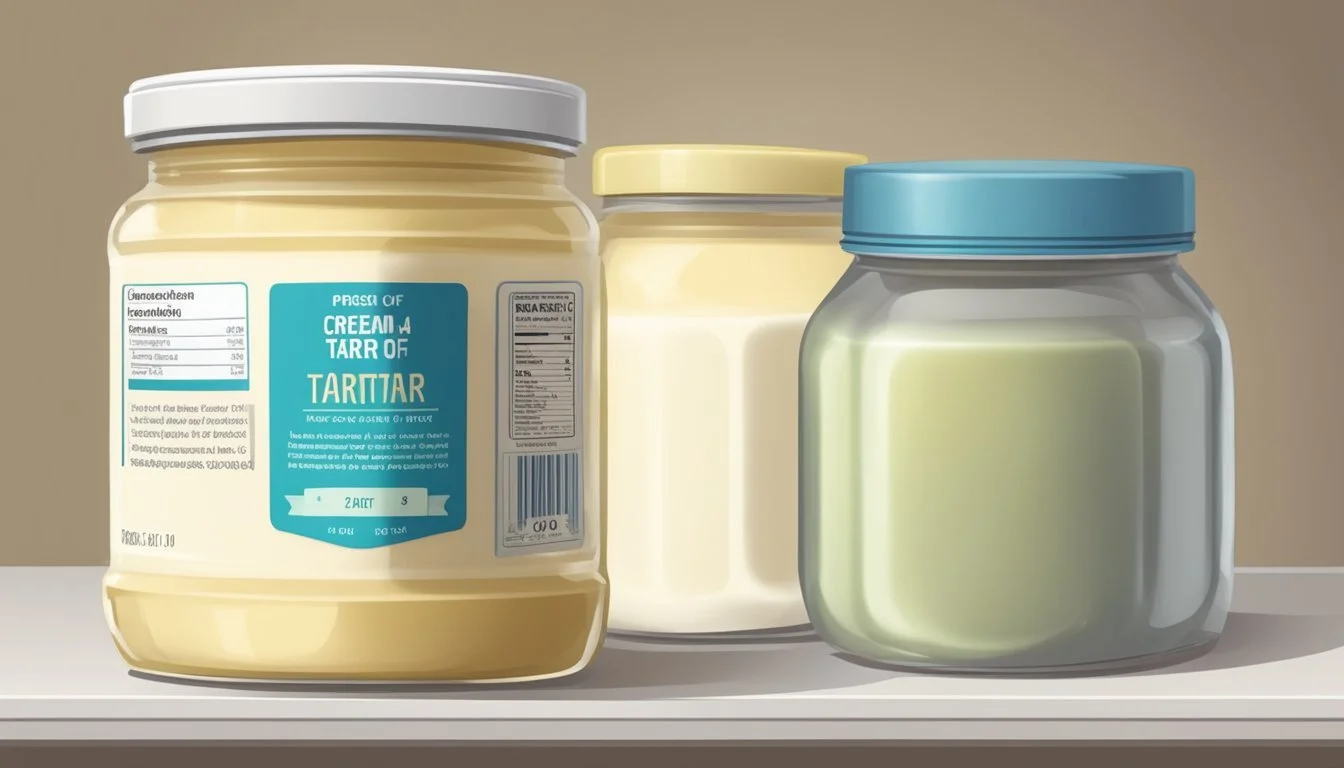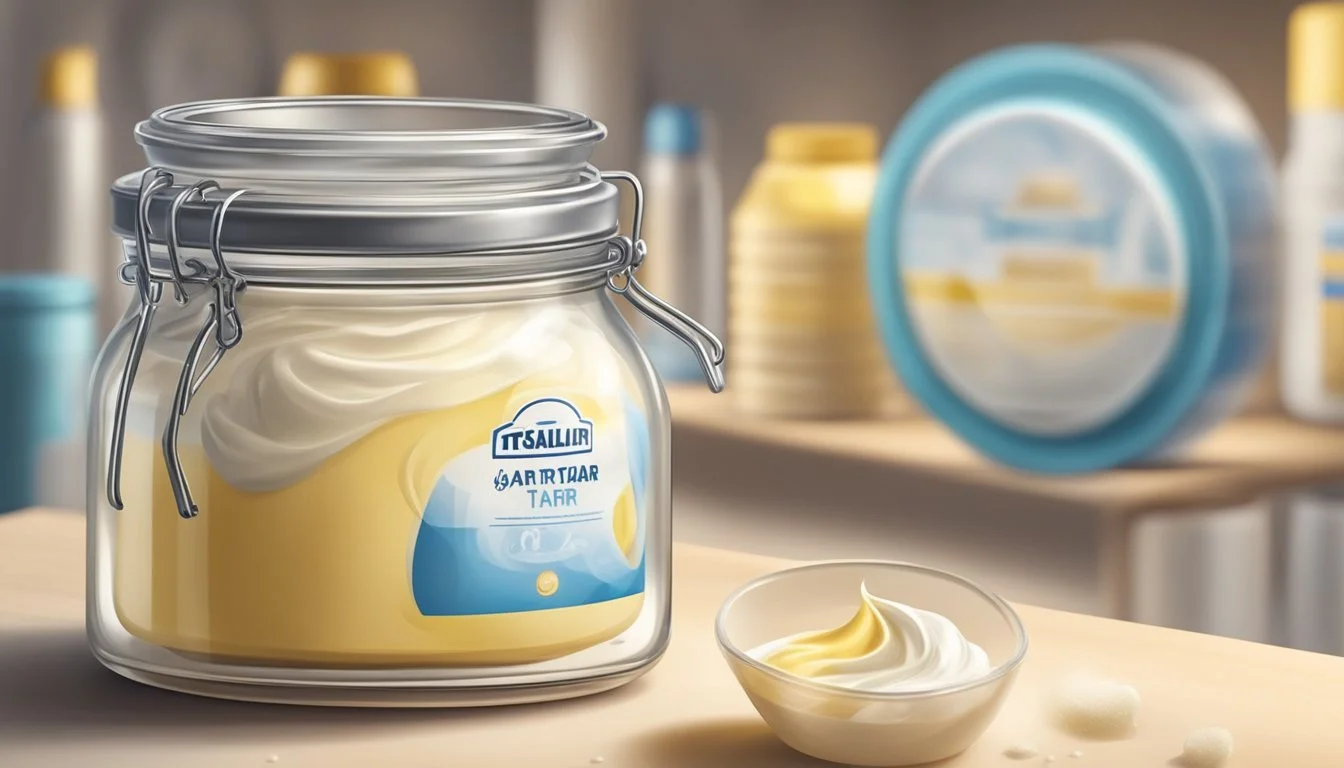Does Cream of Tartar Go Bad?
Freshness and Shelf Life Explained
Cream of tartar is a common ingredient found in many kitchens, yet many people wonder, does cream of tartar go bad? The good news is that cream of tartar generally doesn't go bad as long as it is kept dry and in an airtight container. This makes it a reliable staple that can sit in the pantry for extended periods without worrying about spoilage.
However, over time, cream of tartar can lose its potency. While it doesn't spoil in the traditional sense, the leavening power and acidic properties it provides can diminish, particularly after several years. For those wondering how to ensure its effectiveness, conducting a simple test with baking soda and warm water can quickly determine if your cream of tartar is still up to the task for your recipes.
Understanding the potential degradation of cream of tartar's properties is particularly important for bakers and chefs who rely on its unique qualities. By storing it properly and knowing how to test its potency, you can make the most of this versatile ingredient well beyond its best-by date.
Understanding Cream of Tartar
Cream of tartar, known scientifically as potassium bitartrate, is a byproduct of winemaking that possesses various uses in both culinary and non-culinary fields. Its properties make it valuable for stabilizing whipped cream, acting as a leavening agent in baking, and even serving as a natural cleaning agent.
Composition and Properties
Cream of tartar is potassium bitartrate, a crystalline acid salt derived from the residue left in wine barrels. It is mildly acidic, contributing to its stabilizing and leavening functions.
Appearance:
White
Powdery
When stored properly, it remains stable and effective for a long period. Moisture and light can degrade its quality, leading to a loss in potency.
Culinary Uses
In baking, cream of tartar plays a pivotal role. It is often combined with baking soda to form a leavening agent. This mixture produces carbon dioxide gas, which causes dough and batter to rise.
Applications:
Stabilizing egg whites: Enhances the foam's structure, making meringues and soufflés stable.
Preventing sugar crystallization: Helps achieve smooth textures in candies and frostings.
Whipped cream: Maintains the cream in a light and airy state.
Non-Culinary Uses
Beyond the kitchen, cream of tartar serves multiple purposes. Its mildly acidic nature makes it a versatile cleaning agent.
Applications:
Natural cleaning agent: Effective for removing stains and rust without harsh chemicals.
Household cleaning: Mixed with vinegar or lemon juice to create an eco-friendly solution.
Mold cleaning: Its acidity helps break down mold and mildew, making it easier to clean surfaces.
Cream of tartar's diverse properties and applications underscore its value both in culinary practices and household maintenance.
Shelf Life and Potency
Cream of tartar, while often believed to have an indefinite shelf life, can lose its potency over time. Different factors can influence its longevity, and identifying spoilage is crucial for maintaining quality in your baking and cleaning tasks.
Factors Influencing Longevity
Proper storage is critical to extending the shelf life of cream of tartar. It should be kept in a cool, dry place, away from humidity and excessive heat. Exposure to moisture can cause it to clump, reducing its effectiveness.
The packaging also plays a role. Airtight containers help preserve the quality over time. Even though cream of tartar might still be safe to use after the expiration date, its potency can begin to degrade after a few years. This degradation impacts its ability to function as a leavening agent.
Identifying Spoilage
While cream of tartar doesn't spoil in the traditional sense—such as developing harmful bacteria—its effectiveness can wane. A simple test to check potency involves mixing a small amount with baking soda in water. If it fizzes, it is still effective.
Physical signs of degradation include smell changes, though rare, and discoloration. If the color has altered or it emits an unusual odor, it's best to replace it. These indicators help ensure that the cream of tartar will perform as expected in your recipes and cleaning tasks.
Proper Storage Techniques
Proper storage of cream of tartar ensures its potency and effectiveness. The key to longevity is protecting it from moisture and air contamination.
Ideal Conditions
Storing cream of tartar in a cool, dry place is essential. Avoid exposure to heat and light as they can degrade its quality. Kitchens often have variable temperatures and humidity levels, so selecting a consistent environment is crucial. Moisture is the main adversary as it causes clumping and loss of potency. Always ensure that the storage area remains dry and stable at room temperature to maintain quality.
Packaging and Containers
Use an airtight container to store cream of tartar. Glass jars or resealable plastic containers work well. Transferring it from its original packaging to a high-quality, sealed container minimizes air exposure. This helps preserve its leavening properties. Ensure the containers are sealed tightly after each use to maintain freshness and prevent moisture ingress. For additional protection, consider placing the container in a resealable bag for an added barrier against humidity.
Identifying and Addressing Spoilage
Cream of tartar can go bad, losing quality and efficacy. Specific changes in appearance, smell, and texture indicate spoilage, and it's important to know if it remains safe for consumption.
Signs of Deterioration
Cream of tartar spoils if not stored correctly.
Clumps: Presence of clumps or unusual thickness may indicate moisture exposure.
Changed Color: If the cream of tartar looks discolored or has dark spots, it may be spoiled.
Off Odor: A sour or unusual smell is a clear sign it's no longer fresh.
Organic Growth: The rare occurrence of mold or other organic growth signals that it should be discarded.
Safe Consumption and Health Risks
While expired cream of tartar might be less effective in recipes, it usually remains safe.
Minimal Health Risks: Using old cream of tartar typically does not result in serious health risks.
Diarrhea: Consumption of significantly spoiled cream of tartar might cause mild digestive issues, like diarrhea.
Storage Guidelines: Store it in a cool, dry place in an airtight container to maintain quality for years, ensuring it stays dry and free from contaminants.
Lifespan Enhancement Methods
Proper storage techniques can significantly extend the usability of cream of tartar. Additionally, certain methods can help restore clumped cream of tartar to its original consistency.
Preventing Degradation
Storing cream of tartar in optimal conditions is key to maintaining its effectiveness. It should be kept in a cool, dry place, away from moisture and direct sunlight. Moisture can cause it to degrade and lose its acidic properties, which are essential for baking.
Containers: Use airtight containers to prevent moisture ingress. Glass jars with rubber seals or high-quality plastic containers work best.
Labeling: Include the purchase date on the container to monitor the age of the product, which helps in assessing its potency over time.
Reviving Clumped Cream of Tartar
If cream of tartar has clumped, it can often be revived and returned to usable form. Clumping typically occurs when the product is exposed to moisture over time.
Method: Place the clumped cream of tartar in a sieve and press it through with a spoon. This will break up the clumps and restore its original fine texture.
For severe clumping, spreading the cream of tartar on a baking sheet and heating it slightly in a low-temperature oven can help. This process dries out any absorbed moisture.
Close Monitoring: After treatment, ensure it's transferred back to an airtight container to prevent further clumping and degradation.
Substitutes and Alternatives
Various substitutes for cream of tartar are available, suitable for both culinary uses and household applications. Understanding these alternatives can help you maintain the quality of your recipes or find effective replacements for other uses.
Culinary Substitutes
In the kitchen, common substitutes for cream of tartar include baking powder, lemon juice, and white vinegar.
For instance, you can use baking powder by combining 1.5 teaspoons of it for every 1 teaspoon of cream of tartar. Buttermilk and yogurt also offer an acidic component that acts as a reliable replacement. These ingredients can effectively stabilize egg whites or add texture to baked goods. When using buttermilk or yogurt, adjust the liquid in your recipe to maintain balance.
Meanwhile, if opting for lemon juice, use an equal quantity substitution. This helps keep egg whites fluffy, ideal for recipes like angel food cake. White vinegar, albeit with a stronger flavor, can also be used in a fourfold quantity.
Household Replacements
Outside the kitchen, cream of tartar has various applications such as cleaning and stain removal.
One alternative for these purposes is baking soda. Baking soda can replace cream of tartar in cleaning agents, providing similar abrasive and deodorizing properties. Vinegar serves as a potent household cleaner as well, often used in combination with baking soda for enhanced effect.
For those looking to create homemade cleaning solutions, a mixture of vinegar and baking soda can tackle a range of cleaning tasks. This combination can help in cleaning kitchen utensils or removing tough stains, leveraging the reactive properties of both ingredients.
Cooking and Baking Tips
Cream of tartar is a versatile ingredient commonly used in baking to stabilize and improve the texture of various dishes. Here are some specific ways it can enhance your baking and cooking results.
Achieving Desired Results
Stabilizing Egg Whites
Cream of tartar is essential when whipping egg whites for recipes like meringues, soufflés, and angel food cake. Adding a pinch of cream of tartar helps egg whites retain their shape and increases their volume. This is crucial for achieving the fluffy texture these desserts require.
Improving Texture in Baked Goods
In cookies such as snickerdoodle cookies, cream of tartar reacts with baking soda to produce carbon dioxide gas. This reaction creates a chewy texture and distinctive tang. Incorporating cream of tartar in cakes ensures a moist crumb and tender bite.
Thickening Agent
When used in cooking, cream of tartar acts as a thickening agent. It can enhance the consistency of sauces and syrups without altering their flavor. This makes it a handy tool for achieving the desired thickness in various dishes efficiently.
Preventing Sugar Crystallization
In candy-making or creating syrups, cream of tartar helps prevent sugar from crystallizing. This results in a smoother, more uniform texture, which is particularly important in confections.






